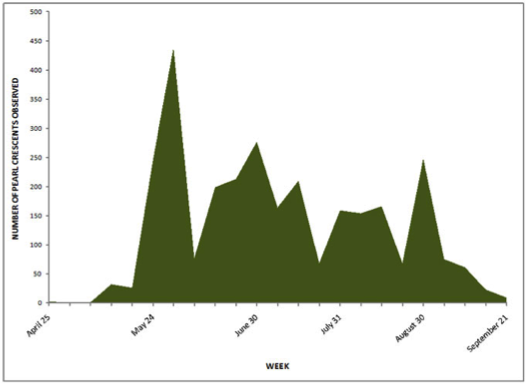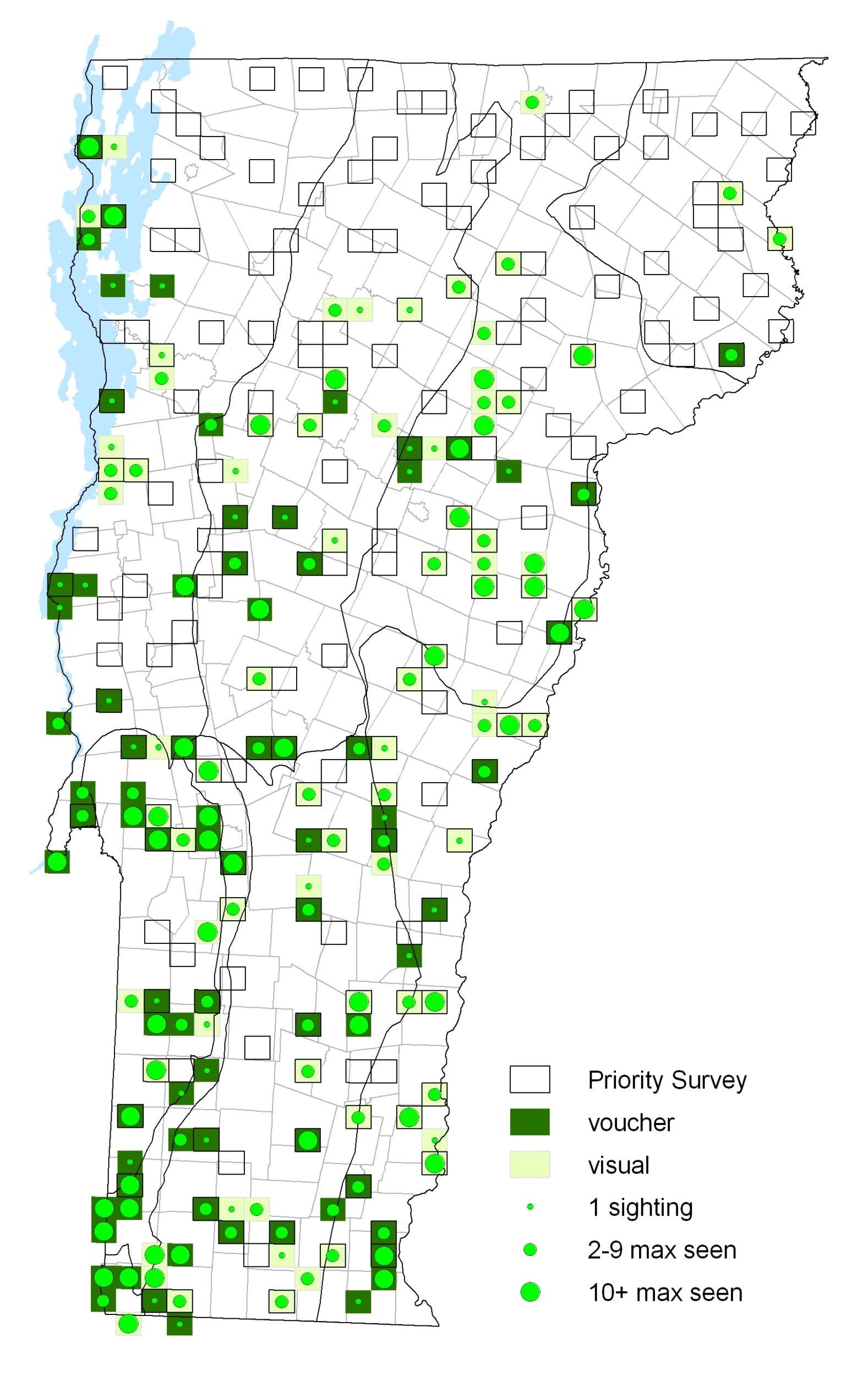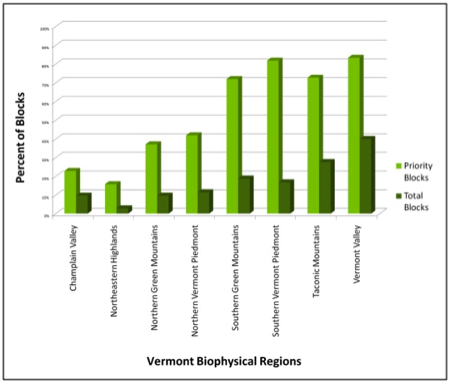|
Resident Conservation Status North American Range |
Adults of the P. tharos group—especially single wild-caught adults — often cannot be identified to species. Phyciodes vouchers from VBS were sent for identification to James Scott, who has recently revised the taxonomy of this group (Scott 1986, 1994, 1998, 2006). Most photographs could not be confidently identified because key characteristics were not adequately shown (J. Scott). P. tharos tharos is generally small (Vermont males average 15.8 mm forewing length), the dorsal hindwing usually has a conspicuous line across the orange area in the middle of the wing, the scaleless area on the antenna club (nudum) is usually black, and the brown patch on the margin of ventral hindwing is usually rather blackish-brown and narrow (in females, the nudum is less-often black, and the brown patch is wider) (J. Scott). Most females could not be identified.
Flight
Flight times derived from confidently identified and probable P. tharos indicated two generations in Vermont, mostly mid May to mid June and end July to mid September in southern Vermont (Bennington & Windham counties). There may be a partial third generation in some years. The first flight is a slightly later (L May-E July and L July-M Sept.) in Windsor and Rutland counties. There are fewer records northward but the two generations evidently fly at the same time as those in Windsor and Rutland counties. Extreme dates from vouchers: 25 April 2005 and 21 September 2003 in Bennington (K. Hemeon), 2 October 1970 in Essex (P. Owen) and 4 November 1974 in Manchester (C.T. Parsons).
Distribution and Habitat
Scudder (1889) wrote, “In New England it is almost everywhere exceedingly abundant.” Based on records confidently identified by James Scott, during VBS it was found in the southern two-thirds of Vermont and northwest on islands. It is a successful generalist and is capable of utilizing a wide array of open habitats, including old fields, pastures, woodland and road edges, and waste places. Caterpillar hosts are several species of smooth-leaved asters. In Vermont, Aster pilosus, and Aster laevis are used. Adults nectar at a wide variety of plants.







